Choose the Country:
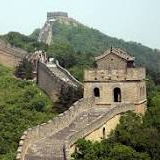
|
Great Wall of China Huairou, China ☎ +86 10 6162 6022 Last Updated: 06/10/2023 |
| The Great Wall of China is one of the world's most iconic landmarks and a UNESCO World Heritage Site. It is a series of fortifications made of stone, brick, tamped earth, wood, and other materials. The Great Wall of China is generally built along an east-to-west line across the historical northern borders of China. | |
| Here are some key points about the Great Wall: - Historical Significance: The Great Wall of China is a monumental fortification that stretches across the northern part of China. It was constructed over centuries, with the earliest walls dating back to the 7th century BC. The wall was built as a defensive structure to protect Chinese states and empires from invasions by nomadic groups, primarily the Mongols. - Length and Sections: The Great Wall is an extensive structure, stretching over 21,000 kilometers (13,000 miles) from the east coast of China to its western regions. It is not a continuous wall but consists of various sections, some well-preserved and others in ruins. The most famous sections include Badaling, Mutianyu, Jinshanling, and Simatai. - Architectural Features: The Great Wall is made of a variety of materials, including stone, brick, tamped earth, and wood. Its width and height vary throughout different sections, but on average, it is around 6 to 7 meters (20 to 23 feet) tall and 4 to 5 meters (13 to 16 feet) wide. It includes watchtowers, beacon towers, fortresses, and other defensive structures. - Cultural Symbol: The Great Wall holds immense cultural significance for the Chinese people. It represents their rich history, resilience, and national pride. The wall has also inspired numerous works of art, literature, and folklore, becoming an enduring symbol of China's ancient civilization. - Tourist Attractions: Many sections of the Great Wall are open to tourists and offer breathtaking views of the surrounding landscapes. Visitors can hike along the wall, explore watchtowers, and learn about its history through museums and exhibitions. The most popular sections, such as Badaling, can be crowded, while others offer a more peaceful and authentic experience. - UNESCO World Heritage Site: The Great Wall of China was designated as a UNESCO World Heritage Site in 1987. This recognition highlights its outstanding universal value and the need for its preservation and protection. - Challenges and Conservation: The Great Wall faces various challenges, including natural erosion, weathering, and human impact. Efforts are ongoing to preserve and restore the wall's sections to ensure its long-term conservation. - Symbol of Unity: The Great Wall of China has long been considered a symbol of unity, as it connected different regions of China and served as a physical barrier against external threats. It has also become a symbol of global unity and a popular destination for international visitors. Visiting the Great Wall of China offers a remarkable opportunity to immerse oneself in the country's rich history, marvel at its engineering marvels, and appreciate the vast landscapes it traverses. It stands as a testament to human ingenuity and endurance, leaving visitors in awe of its grandeur and historical significance. | |
Wikipedia Facebook
China » Beijing
Place » Historical Place

|
Tiananmen Square Place » Historical Place Tiananmen Square, located in the heart of Beijing, China, is one of the largest public squares in the world, covering an area of about 109 acres (44 hectares). It is a symbol of China's national identity and has been the site of numerous significant historical events. 29 views 💖 1Dongcheng, Beijing, China |
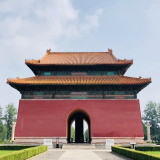
|
Xianling Tomb of the Ming Dynasty Place » Historical Place Xianling Tomb of the Ming Dynasty (tomb of Emperor Hongxi, the fourth emperor of the Ming Dynasty of China). The Ming tombs are a collection of mausoleums built by the emperors of the Ming dynasty of China. 318 views 💖 2China, Beijing, Changping |
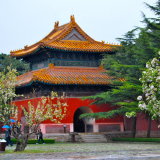
|
Ming Tombs Place » Historical Place The Ming tombs are Chinese imperial tombs. It is located at the foot of Tianshou Mountain in Changping District, Beijing. 280 views 💖 5Changchi Rd, Changping Qu, China |
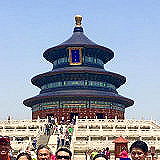
|
Temple of Heaven Place » Historical Place The Temple of Heaven is an imperial complex of religious buildings situated in the southeastern part of central Beijing. 335 views 💖 51 Tiantan E Rd, Dongcheng Qu, Beijing Shi, China |

|
Forbidden City Place » Historical Place The Forbidden City was the Chinese imperial palace from the Ming dynasty to the end of the Qing dynasty. It is located in the center of Beijing, China, and now houses the Palace Museum. 415 views 💖 9Dongcheng, Beijing, China |

|
Beijing Summer Palace Place » Historical Place The Summer Palace is a beautiful imperial garden located in the Haidian district of Beijing, China. It was originally built in the 18th century as a summer retreat for the Qing Dynasty emperors and was later restored and expanded in the 19th century. 260 views 💖 219 Xinjiangongmen Rd, Haidian Qu, China, 100000 |
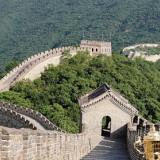
|
Beijing, China Place » City Beijing, also known as Peking, is the capital city of the People's Republic of China. It is located in the northern part of the country and is one of the most populous cities in the world, with a population of over 21 million people. 381 views 💖 3China |
Write a Review :
Great Wall of China
|
|
